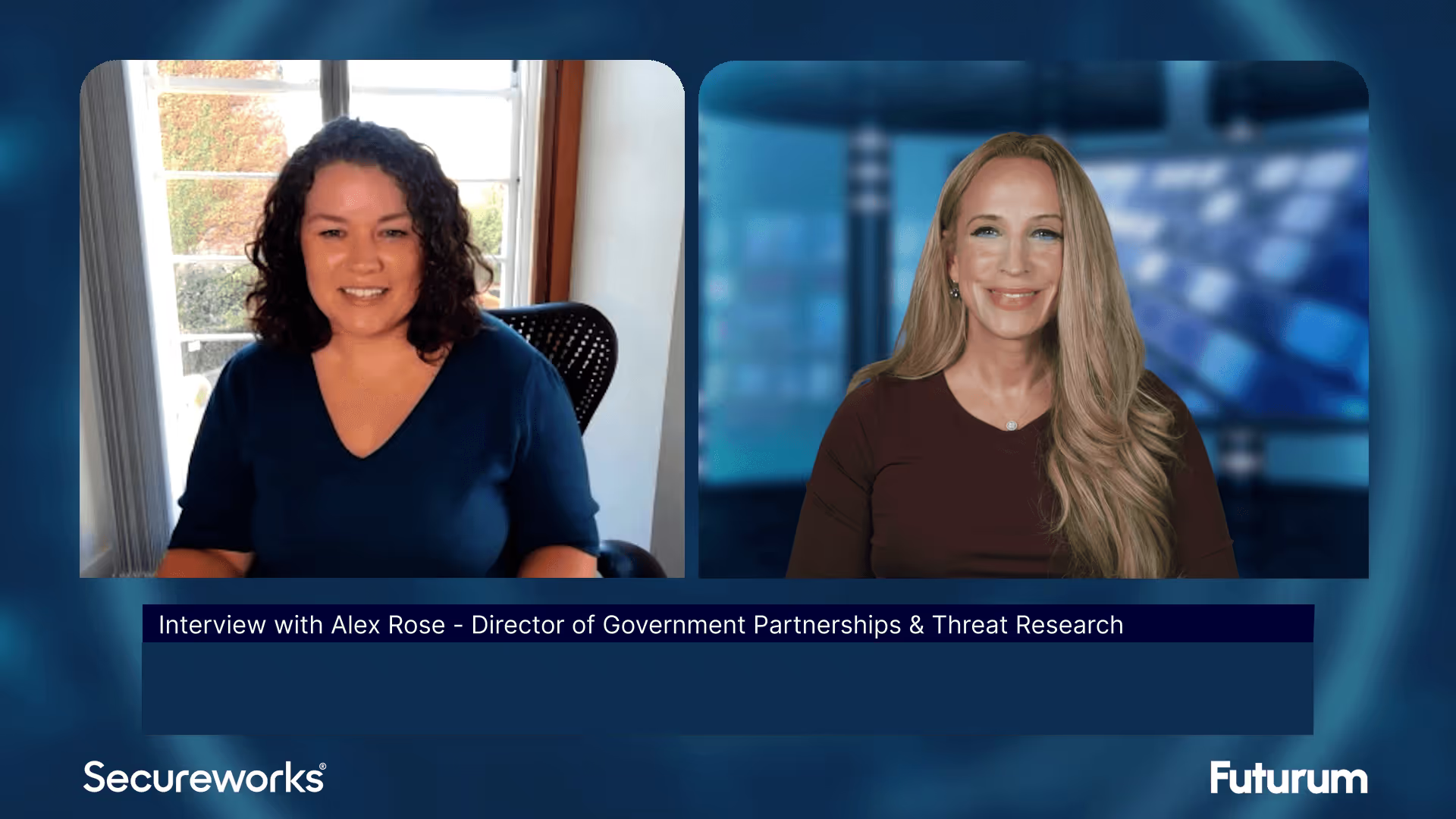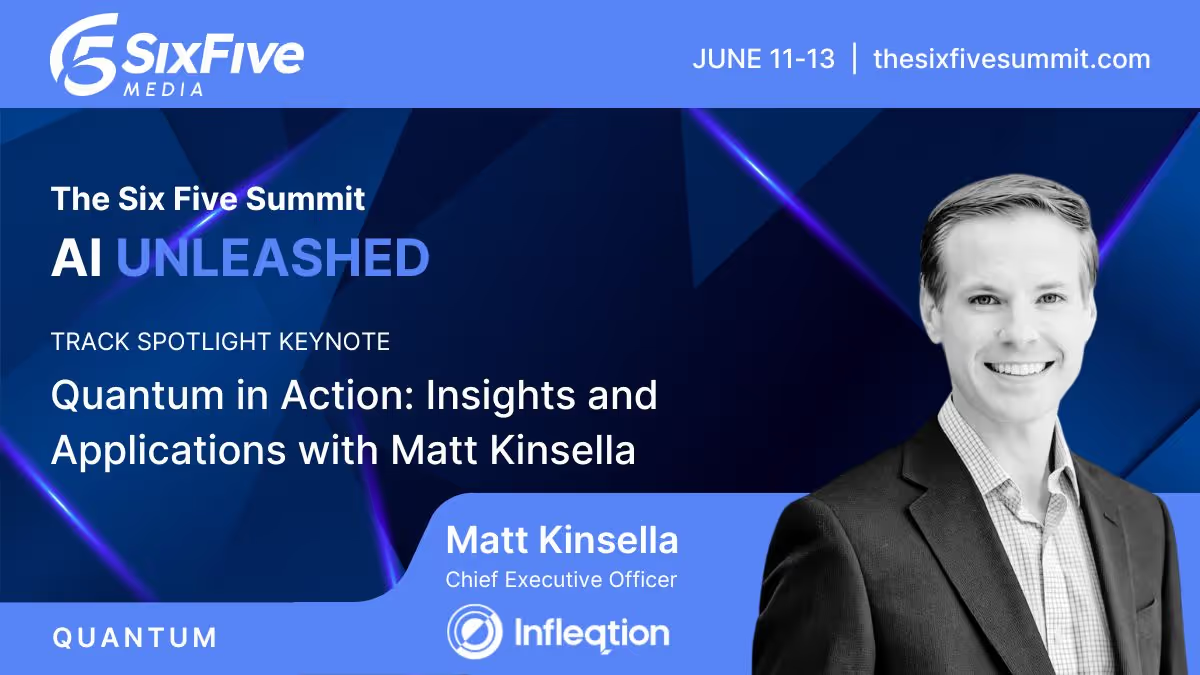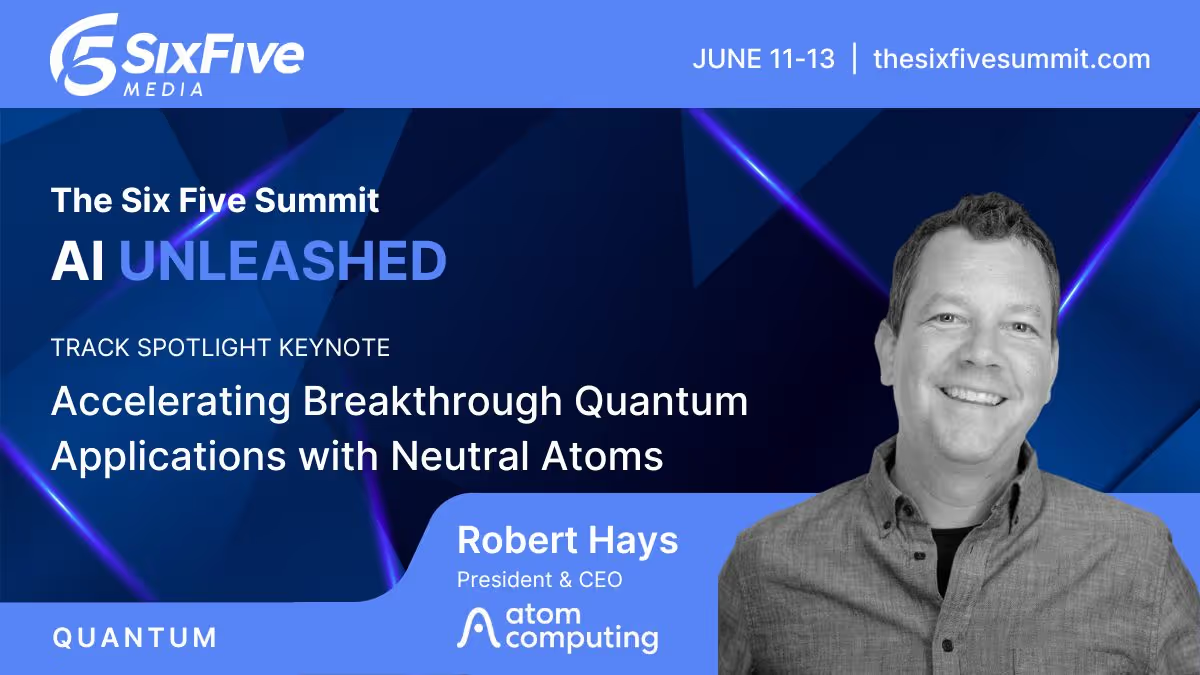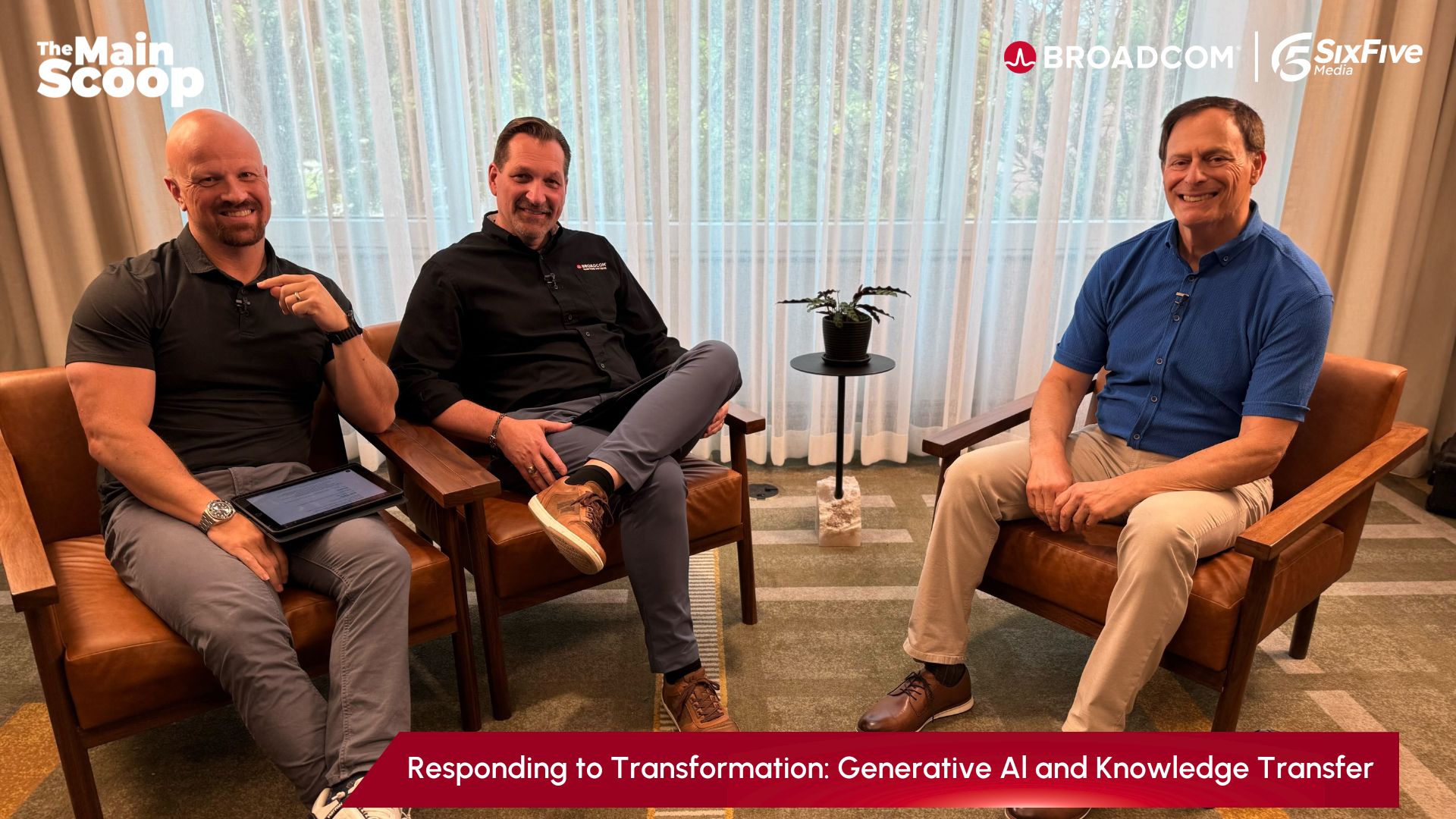Beyond the Numbers: Jim Anderson on Coherent’s Next Chapter
Jim Anderson, CEO at Coherent, joins Daniel Newman and Patrick Moorhead, sharing insights on Coherent's strategic initiatives and vision for navigating through the complexities of today's tech landscape.
Want to know more about Coherent’s quarterly results? Get the details directly from Coherent CEO, Jim Anderson, hosts Patrick Moorhead and Daniel Newman share a conversation on the evolving dynamics at Coherent and their vision for the future in tech.
Tune in as they cover 👇
- Coherent's key role in the AI revolution: Discover how the company is contributing to the rapid growth of datacom and AI technologies
- The power of a diverse industrial business: Learn about the often-overlooked industrial segments and their importance to Coherent's overall success
- Building a winning culture: Jim emphasizes the critical role of cultural attributes in driving innovation and maintaining a competitive edge
Learn more at Coherent. Watch the full video above, and be sure to subscribe to our YouTube channel, so you never miss an episode.
Patrick Moorhead:
The Six Five is back, and we are talking about tech. We are talking about connectivity. We are talking about the base technology that it takes to basically make the AI economy go. Dan, how’s that for an intro?
Daniel Newman:
Yeah, Pat. Look, it’s been a year where I feel like there’s some themes that we’ve definitely got to lean on here, but I’ve really been talking about it’s the year of AI ROI, and right now there’s a lot of foundation, fundamental and innovation that have to take place to make it happen. And I think every day we’re learning more, we’re seeing more. And by the way, one of the things I think we try to do a lot on this show is also uncover the companies that are doing really important work in this space that aren’t always the first name off the tongue, but are really influencing what’s happening in a space like AI.
Patrick Moorhead:
Yeah, that’s a great time to introduce a friend of The Six Five, Jim Anderson, now CEO at Coherent. It’s great to have you.
Jim Anderson:
It’s good to be back, Pat and Daniel. Thanks for giving me some time. Appreciate it.
Patrick Moorhead:
I know the one thing that I love about the consistency here is, regardless of where Jim is, I think the first time we did a recording, you were at AMD. Gosh, you crushed it there, then you went to Lattice, did the same thing. So I know we’re going to dive into it, but it’s great to see you.
Jim Anderson:
It’s good to see you, too. And I guess that dates us all the way back to AMD days, so I have known you guys for a while. So thanks again for giving me some time.
Daniel Newman:
If you date Pat back to AMD days, Jim, then we’re going to go back to the era of dinosaurs and stone ages and everything else. It’s been a while, but we like to have fun here. We like to definitely watch the industry evolve and of course the players that make an impact tend to stay in the industry, but sometimes where they’re at changes, and we will hit on that a while back. But Jim, we’ve had a number of conversations with you off the record since you’ve come, but we’re really glad to get you on the record. You know we love to talk about the company’s performance. Coherent is a name that is synonymous with helping companies enable AI. You had a really good quarter. Let’s start there and just talk about what’s driving the business over there.
Jim Anderson:
Yeah, I appreciate it. We really did have a good quarter and this is our fiscal second quarter. This was our December quarter. And I really appreciate the outstanding execution that my team had in the quarter. We grew revenue about 6% sequentially, but we grew at 27% on a year-over-year basis. And the company grew in a bunch of different areas, but we didn’t just grow top line revenue, we expanded gross margin on both the sequential and year-over-year basis. And then in terms of profit, if we look at the EPS, we grew EPS 40% sequentially, so 4-0% sequentially, and we more than tripled it on a year-over-year basis. So I would say yeah, good progress. We have a lot more work to do for sure as a team, but really good progress in our fiscal Q2, and in a couple areas of growth that I would flag. Number one, and you guys already mentioned it, data center is a big market for us and it’s a big part of our revenue, and no surprise, AI-driven data center growth. We do a lot of optical transceivers that enable the optical networking between different computing nodes in the data center. So we saw tremendous growth there. But the other big part of our business, maybe a little less appreciated right now than the data center business, but I love this part of our business, is the industrial part of our business. And we saw a really nice sequential growth in our industrial business across a bunch of different areas. So I would say good balance growth across the company. But great fiscal Q2 and a great end to the calendar year.
Patrick Moorhead:
So I want to get back to the intro here. We talked about getting to know you at AMD and Lattice; two turnarounds there that you were part of or led. And I know with you, Jim, you give all the credit to the team, but it does take a strong leader to pull that off. With that said, why did you join Coherent? It’s just another opportunity to up and to the right, a new challenge for you?
Jim Anderson:
Well, you guys have both known me for a long time, and I think probably you know that, look at the end of the day, I’m a product guy. I love products, I love the technology, I love spending time with customers. So I get really excited about the products and technology, and that’s really, I think ultimately what drew me into Coherent is, when I looked at the technology platform of this company, just the depth and the breadth of the technology is just astounding. And I did my research before joining the company and was pretty astounded by the breadth of technology. But then when I got inside the company, able to visit lots of different sites, our production sites, our R&D sites, and it’s like getting a look under the hood of a new car and finding out that the engine is way more powerful than what you thought.
So the technology engine in this company was even more powerful than what I thought once I got inside. And one of the things that’s really unique about Coherent, and it’s very different than the other companies I’ve worked with in my career, is if you think about what Coherent does, it almost all comes back to the photon. So you guys know the photon is the fundamental particle of light, and the photon has all sorts of unique properties that make it pretty incredible. But Coherence, all of Coherence’s core competence is around harnessing the power of a photon, using a photon to do all sorts of amazing things. And I spent the prior part of my career around electrons and making electrons compute faster, move data, etc. What is really cool about Coherent is photons and it’s focus on photons. And you can boil everything that Coherent does down into three applications of the photon.
The first one is we use the photon or that light energy to transmit data. And obviously that has data center, that’s for AI data centers. That’s a big part of our business, but that’s a fundamental use of photons. But the other way that we use photons is to concentrate them in a laser beam, and you can use that to change the nature of a material. And then the third way is you bounce a photon off something and you can use that to measure or sense things. And so everything we do is basically one of those three things. And I think the company is just incredibly differentiated in its expertise of the photon. And I think that’s going to become increasingly important over not just the next few years, but over the coming decades. So it was pretty exciting from a technology product standpoint, and I think the company’s got tremendous growth ahead of it.
Daniel Newman:
We’re seeing so much opportunity, Jim, in moving data. AI continues to proliferate, the ability to move data more rapidly, and of course light becomes one of the most important options. We simply can’t do in copper and using legacy technologies, what’s going to need to be done to execute. And so it’s really brought companies like yours into focus. And of course a lot of companies that have done traditional network and switch, have all added silicon photonics in meaningful parts of the business. And what’s interesting is you supply a lot of them. So you of course make componentry, you also supply companies and you get all the way down. And what I think is super interesting, by the way, and love to hear more about this as well, is you guys really have this span, all the way down to core materials, all the way to systems that you sell.
And it’s a really rich portfolio and someone would need a lot of time to research. I’m sure when you’re working with the street and the analysts, it takes a lot of work to educate them on everything you do. But one of the areas that hopefully I’m queuing you in here that I want to lean into is, I know you call it datacom. Datacom I sometimes think gets conflated with comms. It’s not. It’s not just comms. That can be part of it. And then of course now you have an AI segment that you’re targeting. These areas are seeing a lot of growth. You can attribute a lot of that successful quarter to it. But how are you seeing this momentum fuel? There’s a lot of narratives around AI right now. You’re on the inside. What’s your insight here?
Jim Anderson:
The short answer is, we’re seeing a tremendous amount of growth right now in demand for our products. In that most recent quarter I was talking about before Q2, just for our data center business, that grew 80%, 8-0% year-over-year. It’s a very, very fast growth. But if you step back and you think about, well, what’s going on in the data center? Of course we’re all aware that there’s these big AI workloads that are being run in the data centers and those continue to grow, and that’s expanding the capacity of data centers. But what a lot of times the industry is focused on is just the expansion in the computing nodes within the data center. So certainly we’re ramping up the amount of compute capacity, whether that’s GPUs or CPUs or XPUs.
But I think, as both of you guys know, as you ramp up the computing nodes, the network between those nodes has to grow at an equal to or greater rate actually than the computing nodes, because there’s a tremendous amount of data and traffic that’s traveling between all these different computing nodes within the server rack itself, between the racks within the data center, and then also between the data centers. A lot of these workloads, big AI workloads, run across data centers. So that’s putting tremendous demands on the total amount of bandwidth that has to be added to the network. Now, if you think about, okay, so I got to add a huge amount of bandwidth, the best way to add bandwidth is to use optical networking because, back to the photon, the photon can transmit bandwidth, can transmit data and provide bandwidth, that’s orders of magnitude greater than you can achieve with electrical connections.
And so that’s why we believe we’re going to see over the coming years this transition to more and more of the Interconnect links between the computing nodes to be more and more optical versus electrical moving forward. And that’s fantastic for us, Daniel, as you pointed out, because we build not just transceivers, today the pluggable transceivers that are used in the data center, but we build all the ingredients, the key optical ingredients that go into that:
the lasers that are used for the light source, the isolators that are used. We grow the garnet material that’s used in the isolator that’s used in the transceiver. This is one of our transceivers here. And we don’t just assemble this thing. We make all the key optical components that go into it. And so I think that positions us really well for this incredible increase in bandwidth in the data center and the drive towards using more optics, replacing electrical connections with optics moving forward.
Patrick Moorhead:
So hopefully, for everybody listening or watching this, a better idea of coherence play in the AI, particularly the data center element of that. But Jim, you also have an industrial business, and can you talk a little bit about that? It doesn’t seem to get as much attention. I totally understand why. Maybe talk about how you define it, what some of your goals are around it.
Jim Anderson:
Look, I think you’re totally right, Pat. Unfortunately, our industrial business doesn’t get as much attention. The data center business is growing quickly, but I love our industrial business. The range of applications that we serve is just incredible. It’s incredibly diverse set of applications in a diverse revenue stream. And then the industrial market over the long term will grow a little slower than the data center market, for sure, but it’s a really stable, steady market with long-term applications. We love it. So we provide all sorts of different products:
lasers, optics, materials into industrial applications. Some of the common applications would be semicap equipment. So all of the really high end equipment that’s used to manufacture semiconductors, a lot of that equipment is very, very dependent on lasers; lasers for inspection, for changing the nature of a material, etc. So that’s a big market for us.
Another interesting one is lasers used for OLED screen manufacturing. So as you might know, OLED screens mostly have been adopted on smaller formats like mobile phones today, but they’re now getting adopted more in PCs, tablets. And so the total TAM of surface area of OLED screens is expanding, while the best way to manufacture an OLED screen, a high quality one, is to use an excimer laser from Coherent. And so that’s another application. And then one of the applications that I really love is the medical applications, too. And this is something people can always identify with because we all get impacted in some way by medical advancements. But just one example of where our lasers get used in these really high-end medical microscopes where you can watch a neuron within a living brain. You can watch an image, an active neuron, and how it’s connected without damaging the brain tissue at all.
And that’s used in Alzheimer’s research, and it’s used to research and diagnose. And in some cases our lasers are used to treat as well. And so for me, that’s a really heartwarming example of our technology. And this is one of our lasers, our industrial lasers. This is one example, but we make a tremendous range of lasers, different wavelengths, different power levels, etc. But they go into lots of different applications. We love that market. It doesn’t get the same airtime as data center right now. Everybody wants to hear about data center, but the industrial market is a great market for us. And the two combined are a really good combination.
Daniel Newman:
Jim, that’s a pretty significant part of your business, though, right?
JimAnderson:
It is, yeah. It’s almost half the business now is industrial or industrial-related applications.
Daniel Newman:
I just wanted that thrown out there because I think sometimes people don’t appreciate that, and then this is a really core attribute. And a lot of what you build and learn there can also be applied into some of those AI and datacom businesses. So these things create a bit of a flywheel. I watched you when you entered as CEO at Coherent, Jim, and it was something I noticed at Lattice is, every CEO is different, but you really put culture first. I saw you taking photos all over the world. You were visiting offices in smaller, more obscure markets. The company’s very distributed around the world. I think you almost did a tour and went everywhere. It feels like this is a really core to the kind of culture you want to create. For everyone out there, I think part of what makes great companies is great cultures. It’s not really a think, I think we know this. But what are your beliefs, values? There must be a reason you felt that you needed to get out there and see everyone. Love to understand that a little bit more about how you’re going to build culture and how that works for you over the longer term leading this company.
Jim Anderson:
Yeah, look, I agree with you, Daniel. To me, culture is a big accelerator. It’s an accelerator of execution, of all different aspects of the company. And I’ve seen this firsthand in the companies I’ve worked with prior to Coherent, the tremendous impact that culture can have. And positive impact if it’s a great culture, but the reverse is true as well, and you can see all sorts of examples of that in the industry. So when I joined Coherent, definitely a focus on what are the key cultural attributes that are going to be important to our customers, our investors, and our employees over the long term? And I’ll pick out just a couple as examples. One cultural attribute that I absolutely love at this company that is stronger than any other company I’ve ever worked for is a culture around innovation, and innovation and a really fundamental physical level.
This company is just amazingly innovative, and we almost take it for granted. Like when I go out and meet the different R&D teams, the production teams across the world, it’s like they just do it day to day and don’t think about it. And I think we take it for granted, but we have this wonderful culture of focusing on really fundamental scientific innovation that benefits our products and our customers ultimately. And so I love that part of our culture. We’re definitely doing things to nurture that part of our culture. But then on the flip side, where I think we have room for improvement, is we can definitely be a more nimble, faster company. And that’s where I’ve really been trying to encourage the organization of, hey, we need to improve our speed. It’s not good enough just to innovate. You got to get it to market as well. We got to speed up our time to market, speed up our execution. And so there we’re making a bunch of changes around enabling our decision makers and our key managers to just be able to make decisions and move quicker as an organization. And so I think that’s our opportunity is to combine that fantastic innovation culture with better speed and agility moving forward.
Patrick Moorhead:
Dan, I think you’re muted.
Daniel Newman:
Well, Jim, that absolutely covers the gambit of things that I think the market, the customers, the industry should want to know about Coherent. As we did in your past roles, and as we mentioned here, I think both for Pat and I, we both really look forward to watching how this journey progresses. From day one, I think we’ve both been harping more about data, more about AI. You’re so important in that space. And by the way, it seems the customers and the industry are really starting to see it. It’s showing up in the numbers. So I want to congratulate you. We are thrilled to continue to be able to call you a friend and have you on The Six Five here. Let’s have you back maybe later this year, or we’ll catch up with you at an investor day. And Jim, keep crushing it over at Coherent and look forward to hearing more soon.
Jim Anderson:
Absolutely. Thank you. Thank you so much for the time. Happy to chat about Coherent and happy to talk with you guys again anytime. Thanks again. Appreciate it.
Daniel Newman:
And thank you, everybody, for tuning in. Hit that subscribe button, be part of The Six Five community. We have a lot of content here, a lot of great interviews and conversations just like this one we had today with Jim Anderson, CEO of Coherent. But for this show, for this episode, for The Six Five, it is time to say goodbye, at least for now. We’ll see you all later.
MORE VIDEOS
.jpg)
The Six Five Pod | EP 267: Grok 4, Galaxy Folds, AI Ethics, and Frothy Markets
On episode 267 of The Six Five Pod, hosts Patrick Moorhead and Daniel Newman dive into the latest tech trends and market dynamics. They discuss Samsung's Galaxy Unpacked event, highlighting innovations in foldable phones and smartwatches. The hosts debate the pace of AI development, with Patrick urging caution while Daniel advocates for rapid progress. They analyze the talent war in AI, noting Meta's aggressive hiring strategies. The conversation shifts to market trends, examining the frothy valuations of tech stocks and drawing parallels to the dot-com era.
Other Categories
CYBERSECURITY

Threat Intelligence: Insights on Cybersecurity from Secureworks
Alex Rose from Secureworks joins Shira Rubinoff on the Cybersphere to share his insights on the critical role of threat intelligence in modern cybersecurity efforts, underscoring the importance of proactive, intelligence-driven defense mechanisms.
QUANTUM

Quantum in Action: Insights and Applications with Matt Kinsella
Quantum is no longer a technology of the future; the quantum opportunity is here now. During this keynote conversation, Infleqtion CEO, Matt Kinsella will explore the latest quantum developments and how organizations can best leverage quantum to their advantage.

Accelerating Breakthrough Quantum Applications with Neutral Atoms
Our planet needs major breakthroughs for a more sustainable future and quantum computing promises to provide a path to new solutions in a variety of industry segments. This talk will explore what it takes for quantum computers to be able to solve these significant computational challenges, and will show that the timeline to addressing valuable applications may be sooner than previously thought.






